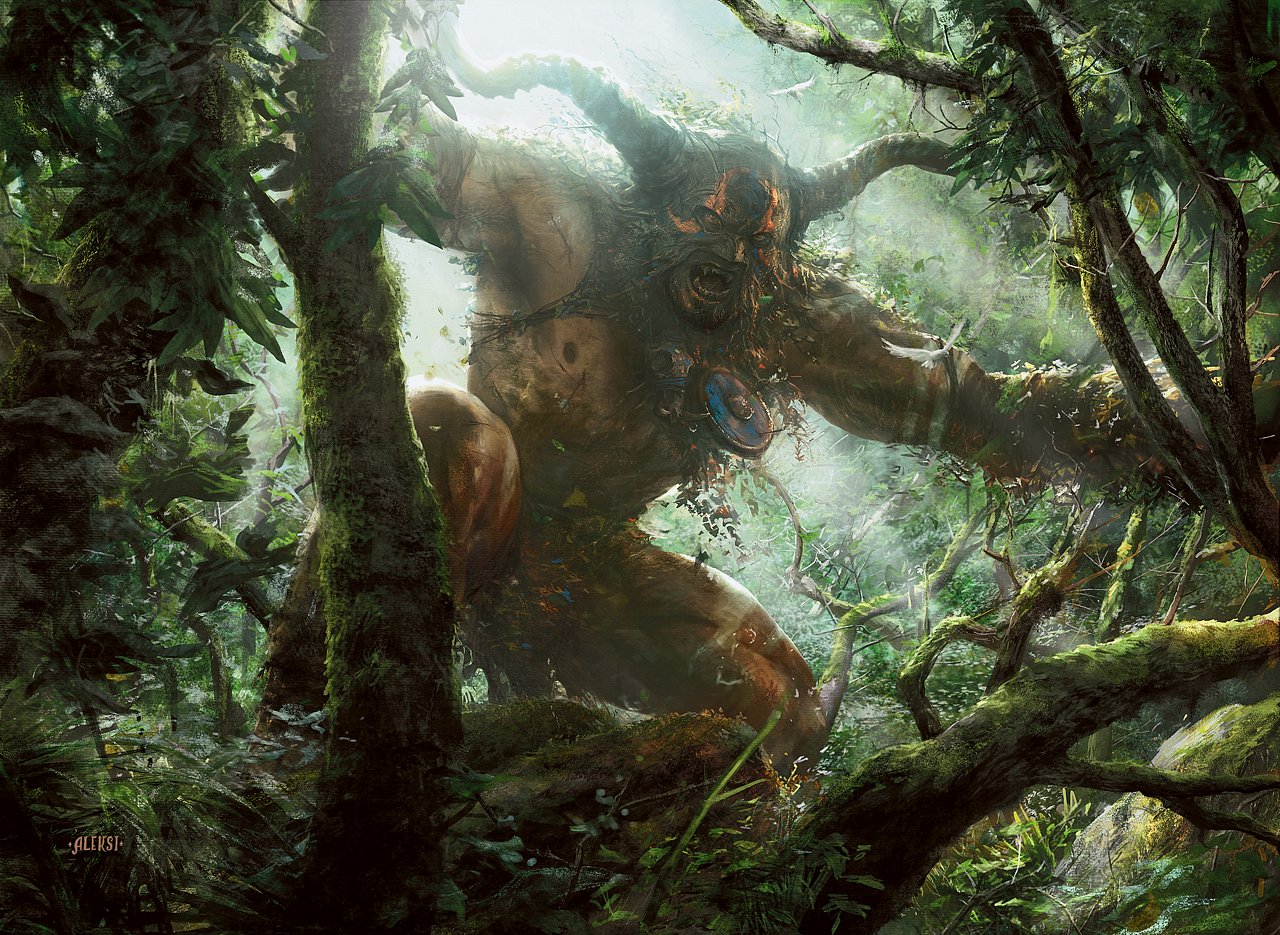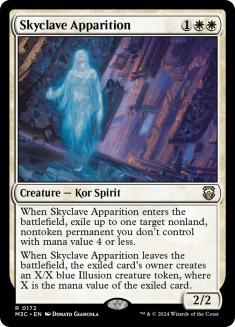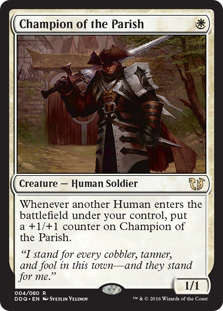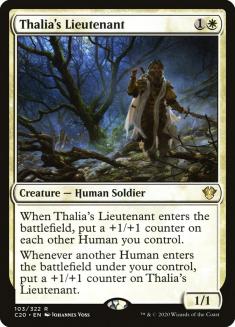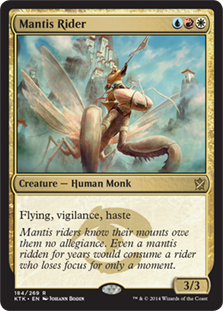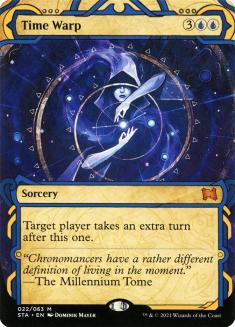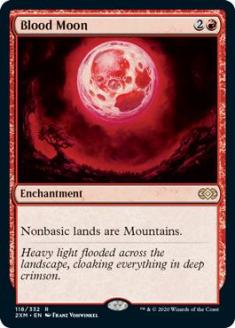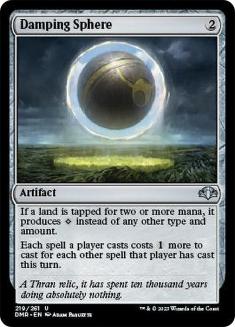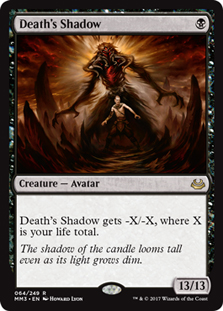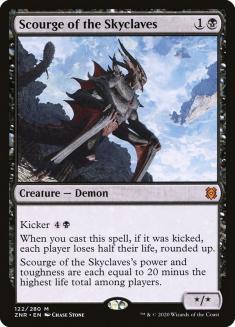Modern has long had a reputation of being wide open, allowing players to choose from a wide array of archetypes. Within those archetypes one often finds a variety of subtypes to choose from. However, it’s also true that this variety, when you look deeply, is illusory. While many decks may be relatively close in power level and expected win rate, there are a few that rise above the rest in the long run, and you’ll be better off choosing from among that much smaller set of decks if you want to give yourself the best chance for success.
After all, one of the longtime tenets of deck selection in Magic is never choose a worse version of something else. If two decks are employing a similar strategy, it’s not enough to say that you like one more or it fits your play style better. If the strategies are similar, then there shouldn’t be a significant difference in their fit for you as a player. Ultimately you have to look at where the decks differ and choose the better option.
I’ll look at four different categories of decks in the current Modern metagame and offer my pick for the best in those categories, along with what separates them from the rest of the pack.
Aether Vial Aggro
- Humans
- Death and Taxes
- Abzan Company
- Bant Spirits
Best in Category: Humans
Creatures (37)
- 4 Meddling Mage
- 4 Noble Hierarch
- 3 Phantasmal Image
- 4 Champion of the Parish
- 4 Thalia, Guardian of Thraben
- 4 Mantis Rider
- 4 Reflector Mage
- 4 Thalia's Lieutenant
- 4 Kitesail Freebooter
- 2 General Kudro of Drannith
Lands (19)
Spells (4)

Aether Vial decks had been on the downswing in Modern until the printing of Skyclave Apparition, which has turned out to be among the most powerful cards in Zendikar Rising. It’s an all-star in nearly every Constructed format, providing these decks which are usually dense with creatures to maximize Aether Vial some much-needed interaction. In Modern, it answers threats as diverse as Death’s Shadow; Uro, Titan of Nature’s Wrath; and Amulet of Vigor, making it all the more valuable.
But even though Humans is the Aether Vial deck that takes the least advantage of Skyclave Apparition, it still retains its crown as the premier deck in the category for one very important reason: pressure. None of the other Aether Vial Aggro decks can match Humans’s ability to put a fast clock on its opponents, and when you’re fighting against powerful late-game cards like Uro and Primeval Titan along with various combo decks, that pressure is invaluable.
All of the decks in this category have some amount of disruption, and because those disruptive elements come attached to creatures, those creatures are often smaller on average. Leonin Arbiter can be powerful when it shuts down fetchlands and other search effects, but at only two power it doesn’t end the game very quickly. As a result, your opponents have more time to draw out of their disadvantage.
Humans would fall victim to this problem as well with cards like Thalia, Guardian of Thraben; Meddling Mage; and Reflector Mage not providing much power for their mana cost. But Champion of the Parish, Thalia’s Lieutenant, and Mantis Rider ensure that you can end the game quickly. The other Aether Vial Aggro decks don’t have anything that matches up to this set of cards.
In addition to pressure, these three cards also allow Humans to match other aggro decks on the battlefield. Death and Taxes and Abzan Company don’t want to get into combat-centric games because their smaller creatures don’t rumble very well. Death and Taxes can use Equipment to get around this, but that’s a slow plan that forces you to rely on a single permanent sticking around. Abzan Company similarly relies on Eldrazi Displacer to dominate the battlefield in creature matchups. It’s nice to have something to rely on here, but I’d rather have the deck that consistently creates a dominant battlefield.
Bant Spirits has Drogskol Captain and Supreme Phantom to match Humans on this level, but is ultimately done in by its higher curve. When it comes to maximizing Aether Vial, which is the best cards in these decks, Humans having a curve centered around two-drops is more effective than the extra three-drops in Spirits.
I have an unnatural affection for Death and Taxes, and when the deck was just emerging as a contender with the addition of Skyclave Apparition, I thought it was a solid choice. But as the metagame adjusts, the power of Humans will always win out in the long run. I’d only play the other decks in this category when there is a particularly favorable metagame for them.
Uro Piles
- Four-Color Copy Cat
- Four-Color Control
- Sultai Control
- Four-Color Ramp
- Five-Color Niv-Mizzet
Best in Category: Four-Color Ramp
Creatures (7)
Planeswalkers (8)
Lands (27)
Spells (18)

This is the category where the decks are most similar. The numbers can shift around a bit, but they’re all composed of Uro, Omnath, planeswalkers, counterspells, and removal. They can run away with a game early when their threats go unanswered, yet are more than capable of winning on Turn 20 with a flurry of interaction and card advantage.
And the fact that these decks are all three or more colors means they have access to lots of different tools to adjust from week to week as the metagame evolves. So it stands to reason that there’s little to differentiate these decks from each other. And when it comes to the reactive elements in these decks I think that’s true. They’re all roughly equal at playing fair games of Magic. What differentiates them, and sets the ramp version with Time Warp apart, is its ability to play an unfair game.
The Sultai lists play a more interactive game since they lack Omnath, and while the black removal helps against planeswalkers, it doesn’t offer anything unique to the deck. Most four-color lists play towards Field of the Dead as their end-game and include a single copy of Hour of Promise to get their quickly when needed. This is a proven winner in interactive games, since Field of the Dead is difficult to interact with and will take over the battlefield given enough time, but we can do better.
The Copy Cat lists certainly do better on this metric, including the powerful Saheeli Rai / Felidar Guardian combo which can end the game from even the most lopsided positions. But that combo requires significant deck space and the two pieces are relatively weak on their own. Ultimately, that variant sacrifices a lot of its power in fair games in order to incorporate the combo element.
After all, one of the longtime tenets of deck selection in Magic is never choose a worse version of something else.
And that’s why I side with the Time Warp lists. The synergy between Time Warp and Mystic Sanctuary lets you turn the many card draw effects into extra turns, and it won’t take more than two or three extra turns to create an insurmountable advantage. With Cryptic Command and sufficient mana, you can even create a self-perpetuating loop that ends the game just as reliably as the Copy Cat combo.
But unlike that combo, Time Warp only takes four slots in the deck, and the card works just fine on its own, especially if you have an Uro or planeswalker on the battlefield. This list strikes the best bargain in gaining a powerful unfair element while sacrificing little of the deck’s great fair gameplan. I expect in the coming weeks we’ll see this version rise further in prominence, so jump on the bandwagon now.
Primeval Titan Decks
- Selesnya Titan
- Amulet Titan
Best in Category: Selesnya Titan
Creatures (19)
- 1 Sakura-Tribe Elder
- 4 Primeval Titan
- 1 Tireless Tracker
- 1 Ramunap Excavator
- 1 Arboreal Grazer
- 1 Springbloom Druid
- 4 Elvish Reclaimer
- 4 Dryad of the Ilysian Grove
- 2 Skyclave Apparition
Lands (32)
- 2 Forest
- 2 Wooded Foothills
- 1 Plains
- 4 Windswept Heath
- 1 Snow-Covered Plains
- 2 Snow-Covered Forest
- 1 Sacred Foundry
- 1 Selesnya Sanctuary
- 2 Temple Garden
- 1 Ghost Quarter
- 4 Flagstones of Trokair
- 1 Vesuva
- 2 Valakut, the Molten Pinnacle
- 1 Bojuka Bog
- 1 Cavern of Souls
- 1 Radiant Fountain
- 1 Scattered Groves
- 1 Blast Zone
- 2 Field of the Dead
- 1 Castle Garenbrig
Spells (9)

Despite being the smallest category, to me this is the hardest one to decide on. Amulet Titan has been a winning deck in Modern for years now, and that pedigree is hard to ignore. It also has a decided advantage over Selesnya Titan in terms of speed. Your Amulet of Vigor draws can end the game as early as Turn 2 or 3, which Selesnya Titan can’t match.
But Selesnya Titan holds a distinct advantage in terms of stability. It ramps in more traditional ways that aren’t as easily disrupted by traditional hate cards like Blood Moon or Damping Sphere, and it plays a more robust game when it’s denied a Primeval Titan. Amulet Titan is very light in interaction and relies on those Titan draws to take over games.
The question then becomes which strength you want to side with. Modern has long had a reputation for fast combo strategies, but in recent years that has changed. Some of the best combo decks have been banned out of the top tier and Force of Negation is a great counterspell to protect you on the early turns. Right now Modern is replete with fair decks, and as a result, I side with the stability and resilience of Selesnya Titan.
Of course, this advantage could shift in the future if the metagame shifts back towards more combo decks, and if you’re a diehard Primeval Titan player you should be monitoring results to see such a shift. Stay ahead of the metagame and you’ll continue to have success with the Jolly Green Giant.
Prowess Decks
- Mono-Red Prowess
- Izzet Prowess
- Rakdos Death’s Shadow (Lurrus)
Best in Category: Rakdos Death’s Shadow (Lurrus)
Creatures (17)
- 4 Death's Shadow
- 4 Monastery Swiftspear
- 4 Bomat Courier
- 1 Kroxa, Titan of Death's Hunger
- 4 Scourge of the Skyclaves
Lands (18)
Spells (25)

Does it still count as a Prowess deck when there’s only one Prowess creature? I think so. All of these decks are using the combination of cheap removal and efficient threats to play an aggressive gameplan that is resilient to opposing interaction. They round out their list with some powerful late-game threats when they need to win a longer game, whether it be Lurrus of the Dream-Den, Bedlam Reveler, Stormwing Entity, or Seasoned Pyromancer. There’s also plenty of reach in these decks to close out a game that’s slipping away.
Rakdos Death’s Shadow may not be as dense with these elements as the other decks in the category, but that ends up being its strength. The Rakdos list isn’t nearly as linear as the other decks listed here. It can go wide and end the game quickly, but it can also go tall with a big Death’s Shadow or Scourge of the Skyclaves combined with Temur Battle Rage.
Black also gives it access to more wide-ranging removal than the other decks. Fatal Push can handle large creatures and you have a lot more sideboard options, though this list is only availing itself of a single Terminate. Then there are the discard spells that allow Rakdos to disrupt from a different angle, especially against combo and big mana strategies.
Lastly, I think Lurrus is the most consistent source of card advantage these decks have. None of the builds have a lot of card selection, so having your late-game card in exile, available every game when needed, is quite valuable. And it may not be what it was with the original companion rule, but Lurrus will absolutely take over a game when left unchecked.
Ultimately, Rakdos Death’s Shadow isn’t much slower than the more Prowess-heavy lists, and it gains a huge amount of resilience, late-game power, and versatility in the tradeoff. As I noted in the Primeval Titan section, those qualities are quite valuable right now, given how dense the metagame is with interactive decks.
Picking the Best Deck
It can be intimidating trying to figure out which Modern deck to pick when we have a metagame like this one where no deck is more than 10% of the metagame and it seems like there are 30 viable options. But narrowing the viable choices down in this way is something I find quite helpful. And if none of these decks are your cup of tea, there are plenty of other options that I think can compete with these.
After all, there are countless ways to attack a metagame, and finding unique ways to do so can give you success when done correctly. But all of the above strategies are proven winners and are thus safe options for almost any Modern tournament. Just be sure that when you’re taking the safe option, you’re choosing the most powerful version of that strategy that you can. Otherwise you’re sacrificing equity.
It may be hard to admit that a pet deck of yours is simply worse than a similar deck, but making those hard decisions dispassionately is the difference between good Magic and great Magic.

